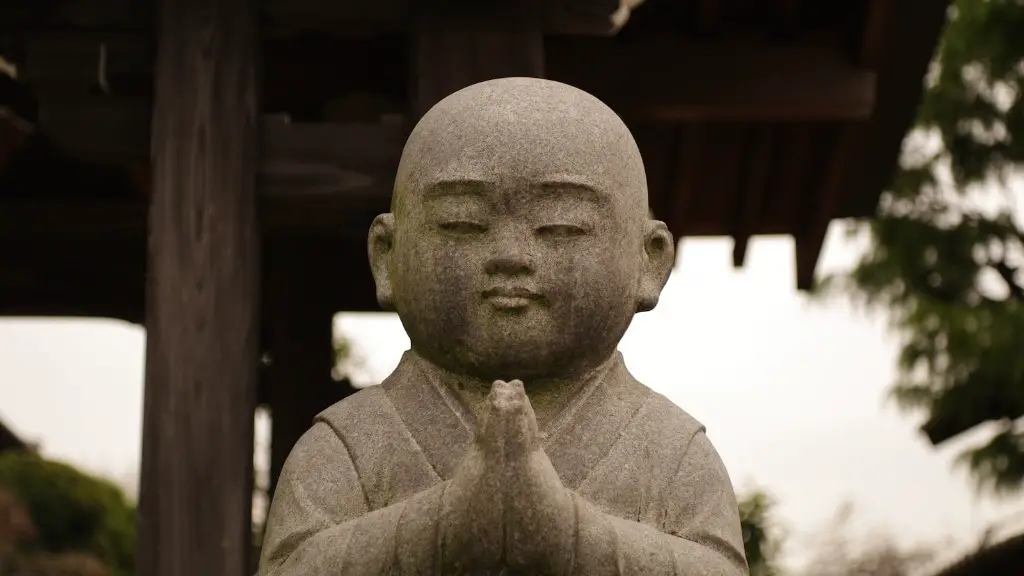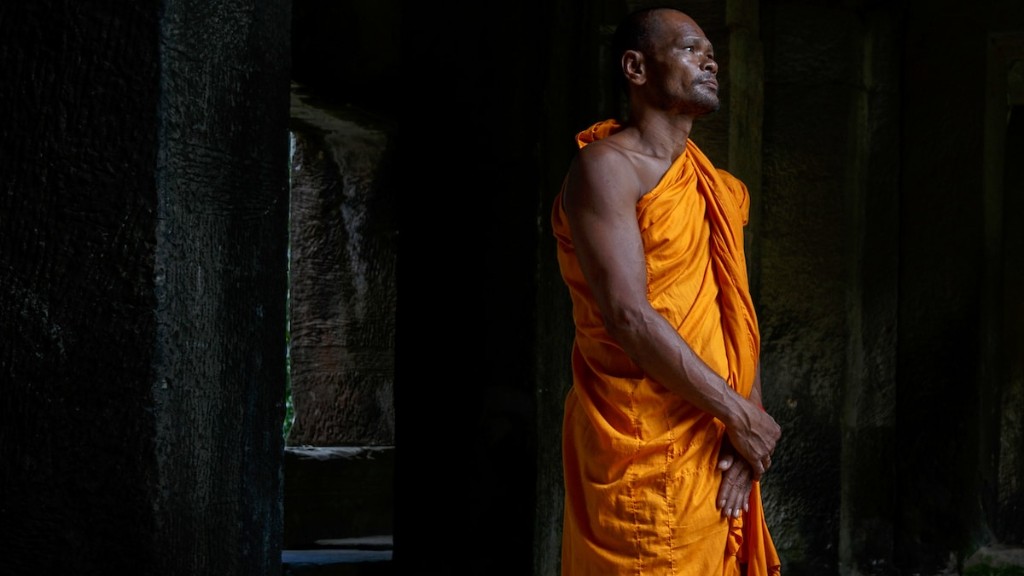Hinduism is one of the oldest known religions, with its roots stretching far back into the mists of pre-history. It is a complex religion, containing many different gods, beliefs, rituals and cultural forms. At its core though, it is based on four core aims – known as purusharthas – which are seen as the path to true happiness and fulfilment. These four aims are Dharma, Artha, Kama and Moksha.
Dharma is concerned with living a moral and ethical life. This could include following religious, social and family duties, being true to your friends, respecting the laws of society and taking steps to be kind and honest. There are countless scriptures that offer advice on how to live a dharmic life. The Manusmriti, for instance, outlines ten major virtues (from control of the mind to forbearance), along with the ten offences to avoid – these are the ones most commonly referred to when discussing Dharma.
The next aim is Artha, or the pursuit of material wealth. This does not necessarily mean amassing money and wealth for its own sake, but instead refers to the need for economic security. Artha includes things such as obtaining employment, having a safe home and providing for one’s family. For Hindus, this is an important aim as it helps to provide a sense of security and stability in their lives.
The third aim is Kama, or the pursuit of pleasure. While many religions frown upon pleasure-seeking and view it as immoral, Hindus believe that Kama is a necessary component of life. This could include engaging in hobbies, enjoying artistic pursuits, playing sports or simply taking time for yourself. Hindus believe that taking time to enjoy life is an important part of living a well-rounded, fulfilled life.
The final aim of Hinduism is Moksha, which is the pursuit of salvation and the attainment of eternity. Moksha is not easy to achieve, and a lifetime of selflessness, devotion and spiritual practice is required to reach its lofty goal. Hindus believe that Moksha is the ultimate aim of life, as it leads to freedom from the cycle of birth, death and rebirth that so many other religions are also based upon.
Ahimsa: A Fundamental Practice Within Hinduism
Ahimsa is a core principle of Hinduism, which literally translates as ‘nonviolence’ or ‘compassion’. It is commonly expressed in the form of respecting all life, from humans to animals and plants. Hindu scriptures forbid the killing or harming of any creature, encouraging followers to live in harmony with nature. Ahimsa transcends physical violence – it applies to thought, speech and behaviour as well. To live an ahimsic life is to show compassion to even one’s enemies.
Ahimsa is more than simply refraining from violence – it is an active practice of love, kindness and consideration for all living beings. Hindus believe that taking time to think about how their decisions will impact others is an important part of living an ahimsic life. By focusing on ahimsa, Hindus believe they can work towards bringing peace and love into the world, as well as securing their spiritual liberation.
Ahimsa is seen by many as the foundation of the four aims of Hinduism, both ethically and spiritually. Without it, a life based on the four purusharthas would be impossible. Only by respecting the life of others can we hope to build a just, harmonious and spiritually fulfilling life for ourselves and our loved ones.
Jnana Yoga: Seeking Enlightenment Through Knowledge
Jnana yoga is a form of yoga which emphasizes the pursuit of knowledge as a way to attain enlightenment. This is seen as the most exalted path in Hinduism, as knowledge is not only the foundation of physical and spiritual progress, but also the path to true inner peace. Jnana yoga teaches that knowledge of the Self is the key to liberation, and encourages followers to question and explore God, life, death and the nature of reality.
The main goal of Jnana yoga is to attain self-realization, which is the realization of one’s true identity and inner power. Through this process, followers of Jnana yoga learn that they are not the body but the spirit, and that they are ultimately connected with the divine. Through this realization, they are said to reach a state of timeless bliss and freedom, as well as a greater understanding of their place in the world.
The path of Jnana yoga is a difficult one, and requires a lot of discipline, dedication and faith. It is not an easy task to strip away all of the illusions of the physical world, but those who take on this challenge are said to reap a great reward at the end. By gaining a true understanding of the nature of reality, one is said to reach a state of ultimate liberation from the material world.
Karma Yoga: The Path Of Action
Karma yoga is the path of action, with its main aim being to attain union with the divine through selfless service to others. Followers of karma yoga focus on doing the best they can in any situation, and believe that their actions have a profound effect on the world around them. They accept their life for what it is, and strive to focus on the right thing to do in any given situation.
Karma yoga teaches that each action has an effect on the world, and encourages followers to do good deeds and be of service to others. Thus, it encourages people to take action and use their talents and skills to improve the world around them. Karma yoga also advocates non-attachment, which is the idea that one should not become too attached to the outcome of their actions. In this way, one can move through life with a sense of balance and selflessness.
An integral part of karma yoga is meditation, which is believed to be the most effective way to achieve union with the divine. Through meditation, followers of karma yoga can sharpen their focus and mental discipline, and learn to observe their thoughts with detachment. This helps them to clear their minds, allowing them to be more focused and effective in their action.
Bhakti Yoga: The Path Of Devotion
Bhakti yoga is the path of devotion, and is based on the idea that the highest form of love is unconditional devotion to God. Followers of Bhakti yoga practice unconditional acceptance of all beings and the divine, and believe that love is the way to joy and liberation. This type of yoga emphasizes the importance of relationships in life – both the relationship with the divine, and with other people.
Bhakti yoga encourages its followers to practice devotion and surrender in all aspects of life. This might involve chanting and singing prayers, focusing on mantras or simply being grateful for the blessings in life. Bhakti yoga also encourages its followers to be kind and compassionate, and to have deep respect for other living beings. In this way, followers of Bhakti yoga learn to cultivate a spirit of humility, understanding and generosity.
Through the practice of Bhakti yoga, followers of Hinduism can learn to appreciate not only the divine, but also the world around them. On this path, they learn to appreciate the beauty of life and all it has to offer. It is by achieving union with the divine through unconditional love and devotion that one is said to be able to experience true joy and liberation.
Raja Yoga: The Path Of Self-Control
Raja yoga is the path of self-control, and is one of the most popular forms of yoga within Hinduism. This type of yoga encourages its followers to strive for mental clarity and inner balance. The ultimate goal is to achieve a state of mental peace and tranquillity, free from any attachments and patterns of behavior which might be holding them back. This, followers of Raja yoga believe, is the only way to attain true inner peace.
The practice of Raja yoga encourages followers to stay focused on the present moment and to observe their thoughts with detachment. Through this process, they learn to be less reactive to their emotions, and to remain calm and clear-minded. This helps them to become aware of their underlying desires and motivations, enabling them to make decisions that are in their best interests and those of society.
The practice of Raja yoga also involves cleansing the body and mind through the use of meditation and breathing exercises. Through the practice of yoga asanas, followers of Raja yoga learn to develop physical discipline and control. This helps them to build strength, endurance and flexibility in the body, while also calming the mind and allowing them to reconnect with their inner truth.
Yoga: A Path To Union With The Divine
Yoga is an important tool in Hinduism, and takes many different forms. Hatha yoga, for instance, is a physical practice which includes the practice of postures and breathing techniques. It is believed to help bring about a sense of balance in the body and mind, and is often seen as a foundation for more advanced practices. Similarly, Raja yoga combines physical postures with meditation and self-control, and is said to lead to a deeper understanding of one’s inner nature.
Karma yoga and Bhakti yoga involve the practice of selfless service, while Jnana yoga emphasizes the pursuit of knowledge. All of these paths lead to a greater understanding and appreciation of the divine, and are said to help followers of Hinduism attain inner union with the divine and the achievement of spiritual liberation.
At the heart of Hinduism lies the belief that each person must find their own path to union with the divine. Whether it is through the practice of yoga, selfless service or the pursuit of knowledge, the four aims of Hinduism provide a framework for living a fulfilling and spiritually meaningful life.




